weeks 4 and 5
1/75
Earn XP
Description and Tags
ling 101
Name | Mastery | Learn | Test | Matching | Spaced |
|---|
No study sessions yet.
76 Terms
suprasegmental information
phonetic information that may be combined with segments in a non-sequential manner
3 kinds of suprasegmentals
pitch, length, loudness
pitch
scale of high to low pitch
length
duration of a segment
loudness
volume of a segment
faster vibration = (___) pitch
higher
intonation
pitch modulation signals a grammatical or semantic information above the word level. happens in all languages
tone
single-syllable words which differ only in pitch have different meanings in most languages
intonation example
Danny became a lawyer ./?/!
two types of tones
register tones and contour tones
register tones
a single level pitch in one syllable. at most 5 different level tones per language, usually only 3. english examples: H, M, L
contour tones
have a rise or fall in pitch in a single syllable. can have many contrasts within a single language
length
may signal word meaning contrasts
no language is known to use _____ alone to signal word meaning contrasts
loudness
loudness may be used as one component of indicating …
stressed vs. unstressed syllables
stress
the perceived syllable prominence in a multi-syllable word
phonetic correlates of stressed syllables
higher pitch, longer duration, louder volume, more peripheral vowel quality
two conflicting pressures on speech production - articulatory processes
ease of articulation, ease of perception
ease of articulation
speaker tries to maximize ease of production; sounds may become more like neighboring sounds as a result. getting your words across in the simplest way
ease of perception
speaker maximizes distinctiveness of segments in order to communicate clearly
6 types of articulatory processes
assimilation, dissimilation, deletion, insertion, metathesis, vowel reduction
assimilation
one segment becomes more like a neighboring segment
progressive assimilation
a feature spreads forward.
regressive assimilation
a feature spreads backward
intervocalic / interconsonantal assimilation
a segment picks up a feature of surrounding Vs or Cs
liquids in english become voiceless when they follow a voiceless stop. The voiced liquid is ____ in voicing to the preceding voiceless stop
assimilating - progressive
Vowels in English often become nasalized when they precede a nasal consonant. The oral vowel is _____ in nasality to the following nasal
assimilating - regressive
In English, [t] often becomes a flap between vowels (when not at the beginning of a stressed syllable. This is _____ in both voicing ([t] is becoming voiced) and manner ([t] becomes a more open liquid) to the surrounding vowels
assimilation - intervocalic
dissimilation
when one segment becomes less like a neighbor
dissimilation examples
fricative fricative fricative → fricative stop fricative
schwa deletion in english
in an unstressed syllable when the following syllable is stressed
insertion (aka epenthesis)
in English, often insert an oral stop between a nasal stop and a fricative
metathesis
recording of segments, often happens after a historical change over time, may start as a speech error
vowel reduction (weakening)
a vowel is articulated more toward the center of the vowel space, typically as a schwa or changing tense to lax
assimilation examples

progressive assimilation examples
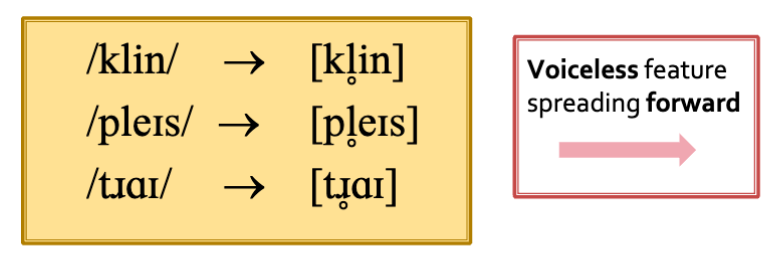
regressive assimilation examples

intervocalic assimilation examples

dissimilation examples

deletion examples
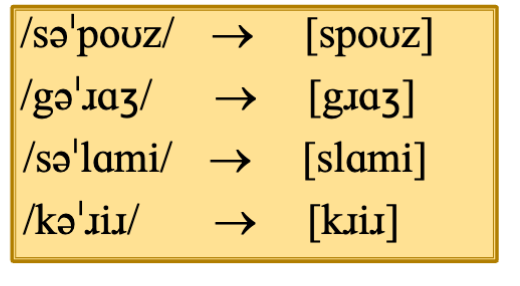
insertion (epenthesis examples)
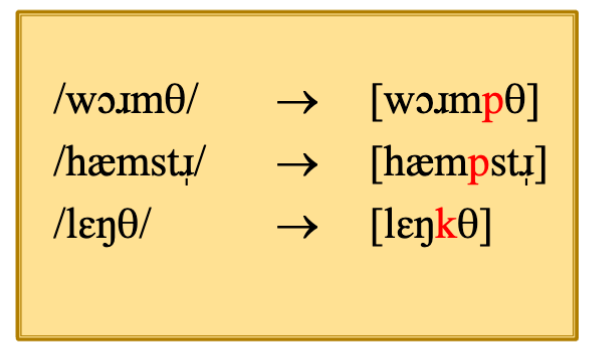
metathesis examples
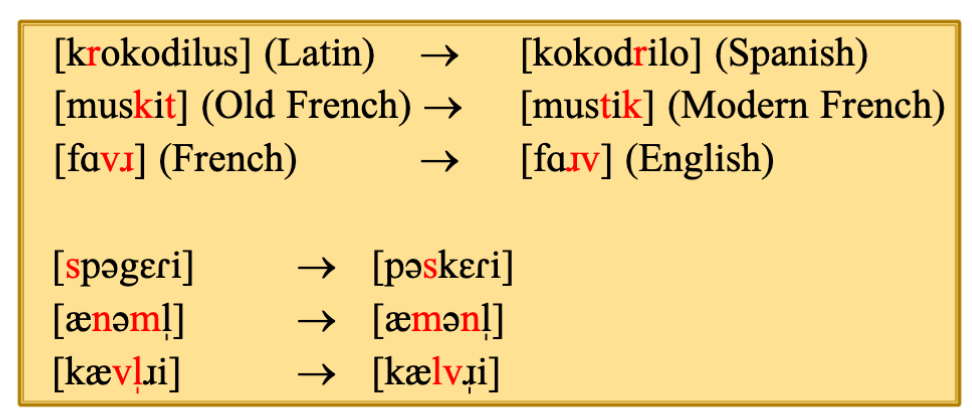
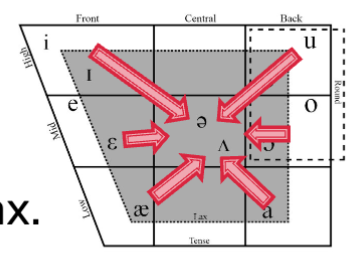
vowel reduction examples

/dogs/ → [dogz]
progressive assimilation - s became voiced
/cats/ → [kæts]
Progressive assimilation — plural ending stays voiceless after voiceless t
/inˈpʊt/ → [ɪmˈpʊt]
Regressive assimilation — /n/ changes to /m/ before bilabial /p/.
/hændbæɡ/ → [hæmbæɡ]
Regressive assimilation — /n/ becomes /m/ due to following /b/.
/bʌtɚ/ → [bʌɾɚ]
Intervocalic assimilation — /t/ becomes a flap [ɾ] between vowels.
/sɪti/ → [sɪɾi]
Intervocalic assimilation — /t/ flaps between vowels.
/ɡrændpɑ/ → [ɡræmpɑ]
Regressive assimilation — /n/ changes to /m/ before /p/.
/ɡʊs + z/ → [ɡʊsiz] (hypothetical “gooses”)
Progressive assimilation — suffix voiced to match stem’s final sound.
hændboʊk/ → [hæmboʊk]
Regressive assimilation — /n/ changes to /m/ before /b/.
/wɔtɚ/ → [wɔɾɚ]
Intervocalic assimilation — /t/ becomes a flap between vowels.
/faɪvθ/ → [faɪfθ]
Regressive assimilation — /v/ becomes voiceless /f/ before /θ/.
/ɡɪvz/ → [ɡɪvs]
Progressive assimilation — /z/ stays voiced after voiced /v/.
/haʊs + z/ → [haʊzɪz]
Progressive assimilation — plural morpheme voiced after voiced /z/.
/hɪs + z/ → [hɪsɪz]
Progressive assimilation — plural morpheme keeps voiceless quality after /s/.
/tɛnboʊl/ → [tɛmbol]
Regressive assimilation — /n/ becomes /m/ before /b/.
/bætɚ/ → [bæɾɚ]
intervocalic assimilation — /t/ becomes a flap between vowels.
/ɹænbæɡ/ → [ɹæmbæɡ]
Regressive assimilation — /n/ changes to /m/ before /b/.
/klɪps/ → [klɪps]
Progressive assimilation — /s/ stays voiceless after voiceless /p/.
sound inventories
the group of speech segments used in a language. no language uses all the possible sounds found in the world
english is _____ average in its number of consonants
slightly above
english is _____ average in its number of vowels
way above
all front vowels are …
unrounded
all back non-low vowels are …
rounded
rounding in other languages - front
this might be the only feature that distinguished a pair of vowels (ex: French, German)
rounding in other languages - back
back vowels tend to be rounded cross-linguistically
some consonants used in english are very common worldwide, but the english __ sounds are not common
“th”
retroflex articulation
articulated with the tongue curled backwards in the alveolar area
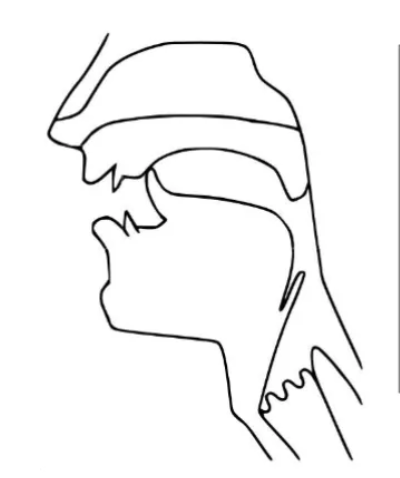
uvular articulation
articulated with the back of the tongue moving towards the uvula
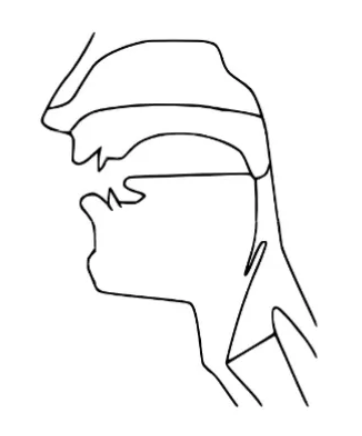
pharyngeal articulation
articulated with the root of the tongue moving towards the ball wall of the pharynx
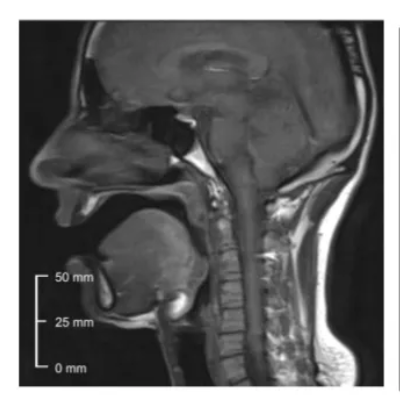
types of non-pulmonic airstream mechanisms
clicks, implosives, ejectives
most consonants have a _______ airstream mechanism
pulmonic egressive
clicks
aitsteram mechanism - velaric (lingual ingressive). can be made at various places of articulation